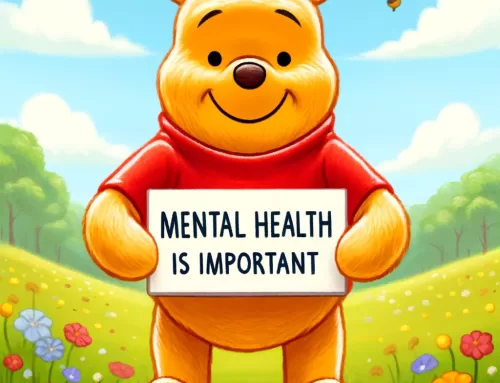 School psychologists in the United States offer counseling, assess students for intervention needs, respond to crises, launch school-wide initiatives to reduce bullying—and more. Trained in psychology, child development, and education, these experts play a crucial role in identifying mental health needs in young people, especially in cases where families don’t speak English or don’t have resources to pursue evaluations on their own.
School psychologists in the United States offer counseling, assess students for intervention needs, respond to crises, launch school-wide initiatives to reduce bullying—and more. Trained in psychology, child development, and education, these experts play a crucial role in identifying mental health needs in young people, especially in cases where families don’t speak English or don’t have resources to pursue evaluations on their own.
But school psychologists are in short supply in the U.S. During the 2021–22 school year, there was, on average, just one psychologist for every 1,127 students in kindergarten through 12th grade across the United States (State Shortages Data Dashboard, National Association of School Psychologists (NASP), January 2023). That’s far fewer than the goal of one for every 500 students set by NASP. There is a particular need for bilingual school psychologists to work in a culturally sensitive and inclusive way with an increasingly diverse student body. The shortage is notably extreme in rural areas and certain parts of the country, especially southern states.
In Mississippi, according to the best available data, there is one school psychologist for every 9,292 students. In New Mexico, the ratio is 19,811 to one. In rural Colorado, it’s 2,128 to one, compared with 942 to one in the state overall. Only a few states and territories meet or come close to the recommended ratio, including Utah and Puerto Rico.
“Our nation is seeing increasing numbers of students experiencing poverty and trauma and growing numbers of children with mental health disorders,” said Andrea Clyne, PhD, president of NASP in Bethesda, Maryland. “Schools are woefully under resourced when it comes to the provision of needed services for a population with diverse backgrounds and needs.”
To address the gap between supply and demand, a variety of efforts are underway to boost the numbers of mental health professionals in schools. Many of those efforts are buoyed by an influx of support from the U.S. Department of Education. In 2023, the department gave $141 million to 103 states and school districts. Grantees are working to raise the profile of school psychology as a profession and recruit more candidates by eliminating the barriers to entry. It is the biggest level of commitment counseling psychologist Dorothy Espelage, PhD, has seen in her 30 years in the field, and it is fueling long-overdue momentum.
“It took a crisis in the schools,” said Espelage, who is also a bullying-prevention expert at the University of North Carolina, Chapel Hill. “We’ve had the shortage, but somehow—because of the suicide rates, because of school shootings and other crises—we’ve had an administration that said, ‘We’re going to pay attention to mental health.’”
Growing demands
Although a shortage of school psychologists has been a problem for decades, the COVID-19 pandemic made the situation worse, experts say, in part by exacerbating a growing mental health crisis among young people. Growing awareness also put a lens on the issue, in turn identifying more kids in need of support.
[Related: Boys are facing key challenges in school. Inside the effort to support their success]
In 2021, 42% of high school students and 57% of teen girls said they felt persistently sad or hopeless, according to a U.S. Centers for Disease Control and Prevention report—the highest rate in 10 years (Youth Risk Behavior Survey Data Summary and Trends Report [PDF, 9.88 MB]). Some 20% of adolescents had major depressive disorder that year, according to a 2023 study, which found that fewer than half of those who needed treatment were getting it (Flores, M. W., et al., JAMA Pediatrics, online first publication).
Suicide is also a rising concern. In 2021, according to the CDC report, 10% of high school students attempted suicide, and 22% seriously considered it. Certain groups of kids are particularly vulnerable to mental health and suicide risks. Among LGBTQ+ students, 69% felt persistently sad or hopeless, and 45% seriously considered attempting suicide. “These are dramatic and staggering numbers of children and youth who are struggling with their mental health,” Clyne said.
For younger kids, educators report seeing more aggressive behavior, dysregulation, bullying, and disruption—a lack of emotional regulation that appears linked to isolation during the pandemic. Kindergartners are running out of the classroom and away from school, and that behavior extends to older students, too, said Stephanie Corcoran, PhD, president of the Alabama Association for School Psychologists and program director for school psychology at the University of Alabama at Birmingham (UAB). Among high school students, rates of chronic absenteeism (defined as missing 10% or more of school days) has nearly doubled from about 15% to 30% since the pandemic, according to an analysis of national data. Parents tell Espelage that their kids don’t seem to be hitting developmental milestones, and their kids say they don’t want to go to school. “I’m in schools every day, and sometimes I’ll turn to the teacher and say, ‘This is an eighth-grade classroom, right?’” Espelage said. “Why do I feel like I’m in a sixth-grade classroom?”
The growing demand has put a heavy strain on already-overworked school psychologists, who may be overseeing 10,000 or more students. The job can quickly become overwhelming. A psychologist needs to be present for every meeting to discuss any child’s individualized education plan, Espelage said, and each of those meetings can take a half a day. With such high student caseloads, that leaves little or no time left to do behavior interventions, help teachers, offer counseling, or other tasks. “What you end up doing is spending all of your time doing special education evaluations,” Corcoran said. “You’re just trying to keep your head above water.”
Barriers to entry
With escalating behavior problems that sometimes include violence alongside COVID-19-related academic losses, schools can be high-stress environments, and burnout rates are high for education professionals of all kinds. Around the country, there are shortages of school nurses, social workers, and counselors. New teachers leave the profession at a rate of 44% in the first 5 years, according to a 2018 study (Seven Trends: The Transformation of the Teaching Force, Consortium for Policy Research in Education). In a 2022 survey of members of the American Federation of Teachers, 74% of teachers said they were dissatisfied with their jobs, and 40% said they thought they would leave the profession in the next two years (Under Siege: The Outlook of AFT Members, Hart Research, 2022 [PDF, 768KB]).
School psychologists are vulnerable to the stresses of working in schools, too. Up to 90% of school psychologists report feeling burnt out sometimes, according to studies conducted before the pandemic (Schilling, E. J., & Randolph, M., Contemporary School Psychology, Vol. 25, No. 4, 2021). In a 2018 survey in the southeastern United States, where shortages are most extreme, about 22% reported thinking about leaving their current position (Schilling, E. J., et al. Contemporary School Psychology, Vol. 22, No. 3, 2018). “There are a lot of issues in schools,” Corcoran said. “Kids have significant needs, and there’s just not enough personnel to cover all the needs, so they can start to feel overwhelmed.”
Then there’s politics. In Florida, Governor Ron DeSantis recently banned social-emotional learning, directly contrasting the efforts of school psychologists. It is illegal there, Espelage said, to teach topics related to social justice, intersectionality, and other concepts integral to psychologists’ work. Similar bills have been proposed in at least eight states.
Even for people who might be a good fit for the profession, school psychology has a visibility problem, Corcoran said. She was working as a special education teacher when she learned about the career, and many of her colleagues have similar stories. “You don’t hear about a lot of little girls and boys saying they want to be school psychologists,” she said. “We joke in the field that you kind of fall into it by accident.”
There is also a strain on the pipeline. Many university PhD programs, which take six or more years to complete, graduate just a handful of school psychologists a year, Espelage said. Boosting numbers more quickly, she said, will require increasing the number of programs that offer master’s-level EdS degrees, which generally require 2 years of coursework and a yearlong internship. “We don’t have time to wait for somebody for 5 to 6 years and then only put five [graduates] out, and then only three of them might actually be in schools,” she said. “It’s going to take decades to address this gap.”
Widening the pipeline
With help from federal funding as part of the U.S. Department of Education’s School-Based Mental Health Services Grant Program, more school psychologists may soon be filling in some of the holes. This past fall, for example, UAB launched a 2-year program to retrain cohorts of 12 educators as school psychologists, earning them an EdS. Instead of the traditional full-time, in-person classroom model, the UAB program offers part-time, hybrid, and online options, Corcoran said. That flexibility expands access to people in rural areas, people who have families, and people who can’t or don’t want to leave their full-time jobs to complete the training. The program also collaborates with school districts to match program participants with fieldwork and internships.
UAB doesn’t require graduates to stay in the school system, Corcoran said, but because people who enter the program have already been working in schools, they are passionate about their work. “One of my students was just saying that they’re having such issues with severe behavior and elopement and that kind of thing, and no one knows how to handle that; they weren’t trained for that,” Corcoran said. “They want to help these kids. The kids are struggling, and the teachers are struggling because they don’t know what to do.”
Other grantees include the University of Wisconsin, Lacrosse; the University of North Carolina, Greensboro; Indiana University; and the University of Denver’s Morgridge College of Education, which is using $3.82 million in federal grant money to recruit and train 32 school psychologists over the next 5 years, with a focus on placing people in Colorado’s rural communities, where ratios of school psychologists are significantly lower than the state average. SUNY Oswego is using its new 5-year grant from the U.S. Department of Education to offer free tuition, a paid internship, and guaranteed placement after graduation in the Syracuse City School District.
One of the most promising strategies for boosting the ranks of school psychologists in the places where they are most needed may be with “grow your own” programs, which recruit people where they already live and work, said Stephanie Schmitz, PhD, a school psychologist at the University of Northern Iowa in Cedar Falls. She and colleagues have used federal funding to recruit people with master’s degrees working in education around the state to respecialize as school psychologists.
The university’s EdS program is now working with its third cohort of five students and has made adjustments based on experience. Students in the grow-your-own program take classes part time and primarily online over two and a half years, instead of two as the program was originally designed, followed by a yearlong internship. They make a 3-year commitment to work in schools in their current geographical area after they graduate.
Few studies have examined the best way to retain school psychologists, Schmitz and colleagues wrote in a 2021 study, but grow-your-own programs offer opportunities to address many of the obstacles. “Within our state I feel like the momentum is definitely building for this,” she said. “There’s a lot of interest.”
In addition to recruitment efforts like these, NASP is working to increase job satisfaction through a focus on initiatives that improve working conditions and professional growth, Clyne said. They are advocating for more federal investments, as well as paid internships for graduate students, stipends, and other financial incentives for school psychologists who earn and maintain their credentials. The organization also offers guidance to school districts on how to create working conditions that help school psychologists do their jobs. And they are working to establish credentialing reciprocity so school psychologists can work across state lines.
When more school psychologists join the profession and stay there, Clyne said, the job gets more enjoyable for everyone—and more students can thrive.




